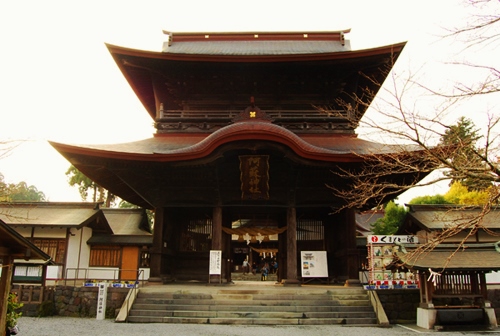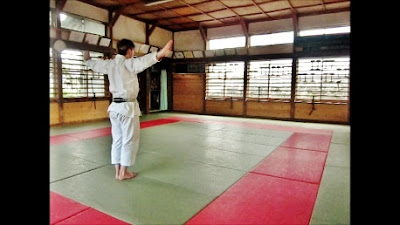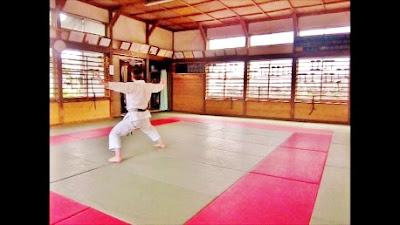"LOPEN SEMARANG"
Ayo...berjalan kaki di Festival Kota Lama Semarang 21-22 September 2013
Tidak terasa, setahun sudah berlalu. Ini tentang Festival Kota Lama Semarang.
Ibu-Ibu dan Bapak-Bapak Yth.,
Dalam salah satu edisi awal Blog Inspirasi Pendidikan Kreatif "Holiparent" ini, saya menuliskan tentang Festival Kota Lama Semarang tahun 2012. Dan sekarang, tanggal 21-22 September 2013 ini, Festival Kota Lama Semarang (yang diadakan setahun sekali) kembali digelar.
Ibu-Ibu dan Bapak-Bapak Yth.,
Sebagai orang yang lahir, dibesarkan, dan sekarang mencari nafkah di Semarang (meski dulu sempat mencari nafkah di beberapa kota lain), saya merasa gembira melihat ada banyak orang yang berminat mengunjungi Festival Kota Lama Semarang kali ini. Ada 2 anak remaja (sambil membawa kamera DSLR) yang bertanya kepada saya, di mana letaknya "Gedung Semut". Ya, tentu yang dimaksud adalah Gedung "Marabunta" yang di bagian atapnya ada 2 patung semut merah yang suangaaaaaat buesaaaaaar. Ketika saya tanya dari mana, kedua anak muda ini menjawab, "Dari Sumatera".
Dan mereka ini tidak sendirian. Masih ada banyak lagi anak-anak muda yang datang berombongan untuk memotret sekitar 20-an bangunan tua dan bersejarah di Kota Semarang ini.
Ibu-Ibu dan Bapak-Bapak Yth.,
Tentu saja, ada spanduk-spanduk yang men-sosialisasi-kan perlunya pelestarian Kota Lama Semarang dalam Festival Kota Lama Semarang ini. Sambil mengajak anak berjalan kaki (dan berfoto-foto), tentu kegiatan ini berguna dalam menambah wawasan anak tentang gedung-gedung tua di kota tempat tinggalnya. Dan ini memang banyak dilakukan oleh para orang tua yang berkunjung dalam festival ini.
Beberapa mobil kuno yang dirawat dengan baik juga dipamerkan di Festival Kota Lama Semarang ini. Kehadiran mobil-mobil kuno ini tentunya dapat dijadikan bahan obrolan kita sebagai orang tua dengan anak kita (kalau anak kita sudah usia kelas V-VI SD atau kelas VII-IX SMP) tentang "betapa zaman sudah jauh berkembang" (dengan membandingkan mobil-mobil kuno yang dipamerkan dengan mobil-mobil yang sekarang ini biasa kita naiki).
Stand-stand yang berjualan makanan dan minuman tentu saja hadir juga dalam Festival Kota Lama Semarang tahun 2013 ini. Ini memang belum tentu mewakili ke-kuno-an Kota Semarang. Tetapi, secara praktis memang berguna menghilangkan lapar dan haus setelah lelah berkeliling Kota Lama Semarang.
Ibu-Ibu dan Bapak-Bapak Yth.,
Karena hanya diadakan selama 2 hari, yaitu tanggal 21 dan 22 September 2013, mungkin ada di antara Ibu-Ibu dan Bapak-Bapak yang sudah sempat mengajak anak-anaknya jalan-jalan melihat Festival Kota Lama Semarang ini, ada juga yang belum. Tidak jadi soal. Yang mau disampaikan dari ediri Blog Inspirasi Pendidikan Kreatif "Holiparent" kali ini adalah : kalau di kota kita masing-masing ada festival / pameran semacam ini, marilah kita mengajak anak kita jalan-jalan menontonnya, karena ini akan menjadi "salah satu sumber" proses belajar anak-anak kita.
Selamat menemani anak.
"Menemani Anak, Mencerdaskan Bangsa".
-----o0o-----
Foto dan tulisan oleh Constantinus Johanna Joseph. Ilmuwan Psikologi anggota Himpunan Psikologi Indonesia nomor 03-12D-0922. Sarjana di bidang Ilmu Alam & Ilmu Sosial. Mahasiswa Psikologi Unika Soegijapranata Semarang.
.jpg)
.jpg)
.jpg)
.jpg)
.jpg)
.jpg)
.jpg)






